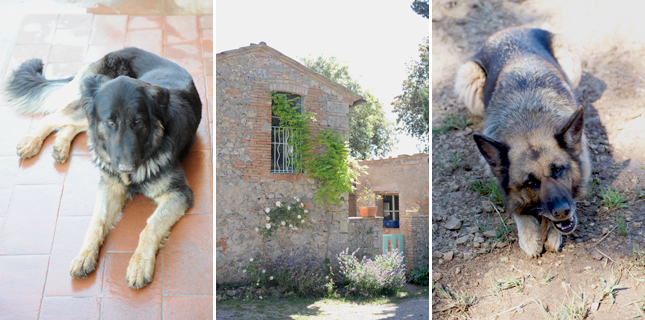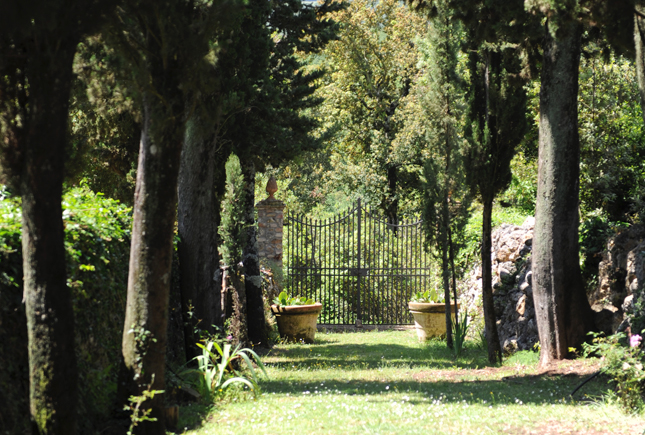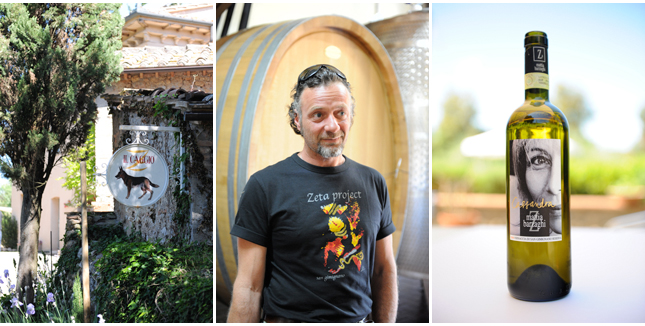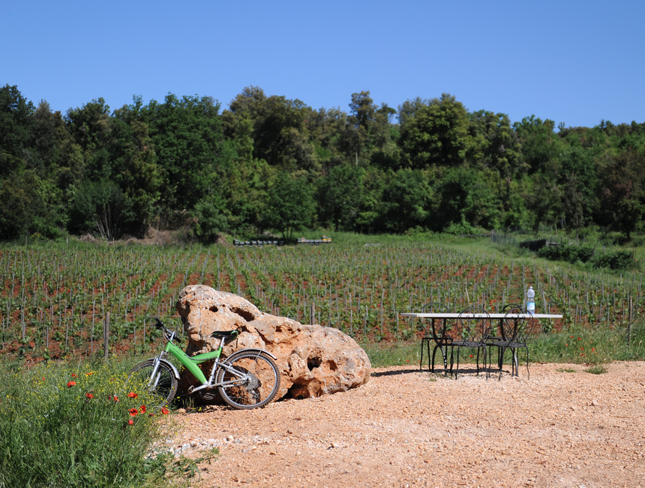Wine and Wolves in Siena

“It was so long ago… when wolves sometimes came across the Ponte Vecchio into the town to look into the window shops…” 1
For a long time the wolf, or lupo as it is known in Italian, was as big a part of the Italian national identity as pasta, pizza and the Vespa are today. As you will recall it was a she-wolf who raised the founders of Rome, Romulus and Remus. It was wolves who were the Roman god Mars’ very own Dogs of War. And, it was an image of the wolf that graced the Roman banners through all three of the Samnite Wars between 343 BCE to 290 BCE. (The Romans won three nil).
Through Medieval times to the Renaissance, the wolves of the Italian peninsula lived alongside the expanding human population existing as they had for centuries with the added bonus of easily poachable livestock kept in convenient, and perhaps to the wolf’s mind, buffet-like, pens. Another perk of the age was the abundance of dead condottieri or mercenary soldiers who fell in one pointless battle after another. Author Hugh Bicheno points out in his incredibly in-depth and utterly byzantine book, Vendetta2, that one wolf population, in the Patrimony of St. Peter, “...made a notable comeback… amid the human chaos.”
The last significant event in which the wolf occupied a place in the Italian national conscious came in 1921 when the naturalist Giuseppe Altobello classified a genetically unique Italian sub-species of wolf, Canis lupus italicus or the Apennine wolf.

Since those days of early Roman glory the wolf as a symbol of power, cunning and strength has lost a great deal of its supernatural pluck, along with nearly all of its former habitat. What little allegorical currency the Canis lupus might have left in the modern world is spent by students who sometimes use the phrase, "In bocca al lupo," ([here we go] into the mouth of the wolf) before entering exams, as a way of wishing each other good luck, much in the same way English speakers use the expression, “break a leg.”
In Italy, like the rest of the world, the reverence for wolves ended. Wolves came to be viewed as dangerous predators that needed to be eradicated. There are no accurate numbers that tell the tale of how many thousands of domesticated animals were lost to marauding wolf packs but between 15th and 19th centuries Church statisticians recorded a total of 440 deaths by wolf attack in Italy.
If you’re a wolf, the chances of you being killed by a human are astronomically high. (Though the likelihood of you being a wolf in Europe is very low.) There have been no wolves in the Alpine regions of Italy since the 19th century. Wolves have been hunted to extinction in the UK, Ireland and near extinction Switzerland, Sweden and Norway. The last wolf in France was killed in 1937 though there has been some comeback along the Italian/Swiss border. Germany reports one known pack that hunts near the Polish border. In a field study conducted in the late 1970‘s it was estimated that there were roughly 100 wolves left in two specific, yet small, areas of Italy.3
Clearly on the brink of extinction the World Conservation Union approached Italian conservation groups who were able to place the wolf on a protected species list. In the intervening years the wolf population in Italy has rebounded to around 500 to 600 individuals. Annual birthrates have been predicted to increase the wolf population by 7% annually.
Some of these remaining wolves roam the hills of Riserva Naturale di Castelvecchio in the Province of Siena. This reserve is famous for its birch tree forests and the ruins of the Castelvecchio, a citadel that sat at the once contested border between San Gimignano and Volterra in 1200s. Roughly 500 people called this their home until wars, an earthquake and, perhaps, the threat of the then plentiful wolves, made life in the little “borgo” untenable. The village was abandonned for good in the 1600s.
The reserve is deceptively remote though it is near the famous town of San Gimignano. To enter the reserve one must drive over some of the most tooth-rattling road in Tuscany; a road that can be impassable when the weather turns wet. It is the same road that Mattia Barzaghi, winemaker and owner of the eponymous winery, drives to get to and from his villa and vineyard.

Barzaghi is all too aware of the increase in the number of wolves in the park given the proximity of his estate to the reserve. In 2010 he lost several members of his goat herd to the increasingly brazen predators. Each goat fatality requires a visit from the local park police to record the event and poke about for clues. To some this would be an annoyance but Barzaghi views his relationship with the local wolf pack, to his environment and his place in it, as a shared one. “These animals are only doing what they know how to do and that is survive.”
This clear-eyed understanding of his relationship to his surroundings extends to his vineyards and cellars earning Barzaghi a reputation for being something of an ecologist in this region. Portions of the land he took over in 2000 had been so saturated with chemicals by the previous owners that it took nearly a decade to rehabilitate the soil. In other parts of his property he has started from scratch. The ultimate goal is to make his operation into a biodynamic farm. Despite being in possession of very old vines, the vineyards weren’t ready until 2007 that Barzaghi bottled his first release. Since that first vintage Barzaghi has quickly risen as one of the San Gimignano DOCGs fastest rising stars. “My wine is quiet correct,” he says, “I do not use any international grapes, I cold press and no oxygen is in my juice. I don’t ever want to add chemicals. I prefer very low SO2 (sulfur dioxide, an anti-microbial and preservative used by all wine but a few winemakers), I clean my juice to be very sure we have a scarceness of dirtiness… I check everything by myself. I am convinced that my wine has its own character. Its own personality and that it is easy to recognize my wine.”
In some parts of the world, and in many parts of Italy, the light touch Barzaghi describes is not practiced. Some producers willfully manipulate their wines to make them more commercial or favorable to the majority of consumers who like heavier, often called “international style” wines. Not Barzaghi, whose Vernaccia di San Gimignano is made in his typically non-interventionist style. “A few years ago,” explains Mattia, “vernaccia was considered to be easy-drinking but very bad wine. The big problem was how to preserve the taste of the grape. When you’re working with vernaccia this means you are working to preserve the elegance of the grape. You cannot make exulted things, you can only preserve and with vernaccia you have little to improve. Think of it like this, vernaccia is like a watercolor picture. It is soft colors that can give you big emotion but you have to understand the grape. Chardonnay is a bold oil painting compared to vernaccia, in the end it cannot give the same emotion.”
Barzaghi also produces a 100% Sangiovese and a rosé of Sangiovese. “I have a long relationship with vernaccia,” he says, “but with Sangiovese I’m still finding my way. I have learned that if you like to work in a cellar, plant white grapes. If you like to work in the vineyard, plant red.” He adds, “Either way, if you have good grapes you can make good wine in your bathtub.”

For many years throughout much of the wine world, winemakers like Mattia Barzaghi were in a numerical sense, in a similar situation to the wolves of Italy: a vanishing species. Mattia, and those who share his more user-friendly, terrior driven approach, were being crowded out of the marketplace by producers with deeper pockets, bigger marketing budgets, louder ad campaigns and who embraced modern production techniques that increased yields and production at the expense of quality. By attempting to restore equilibrium not just to his vineyards in a physiological sense, and understanding his location in the overall ecosystem in which he occupies along the edge of the reserve, traditional producers have reclaimed their place in the wine market. Because of producers like Barzaghi this is changing and makes him and those like him similar to the wolf. “The idea,” he says, “is to grow, to survive.”
For more information:
Mattia Barzaghi & Cassandra Wainhouse
Il Caggio
Azienda Agricola Zeta Project
Loc. San Donato, 13
53037 San Gimignano
T: 0039 0577 941501
Info@il-caggio.com
www.mattiabarzaghi.com
Parks Italy
Riserva Naturale Castelvecchio
www.parks.it/riserva.castelvecchio/Eindex.php

1 Charles Godfrey Leland “Legends of Florence: collected from the people and re-told by Charles Godfrey Leland.” London, David Nutt 57-59 Long Acre. Florence: R. Paggi, 15 via Tornabuoni. 1907 pg. 6
2 Vendetta -- High Art and Low Cunning at the Birth of the Renaissance. Phoenix, an imprint of Orion House Books, Ltd. London, 2007. Pg. 131
3 Report on the conservation status and threats for wolf (Canis lupus) in Europe by Valeria Salvatori and John Linnell Istituto di Ecologia Applicata Via Cremona 71, Rome – IT 00161. Norwegian Institute for Nature Research, Tungasletta 2, N-7485 Trondheim – Norway
Convention on the Conservation of European Wildlife and Natural Habitats. Standing Committee 25th meeting Strasbourg, 28 November-1 December 2005






 Share Article
Share Article
Reader Comments